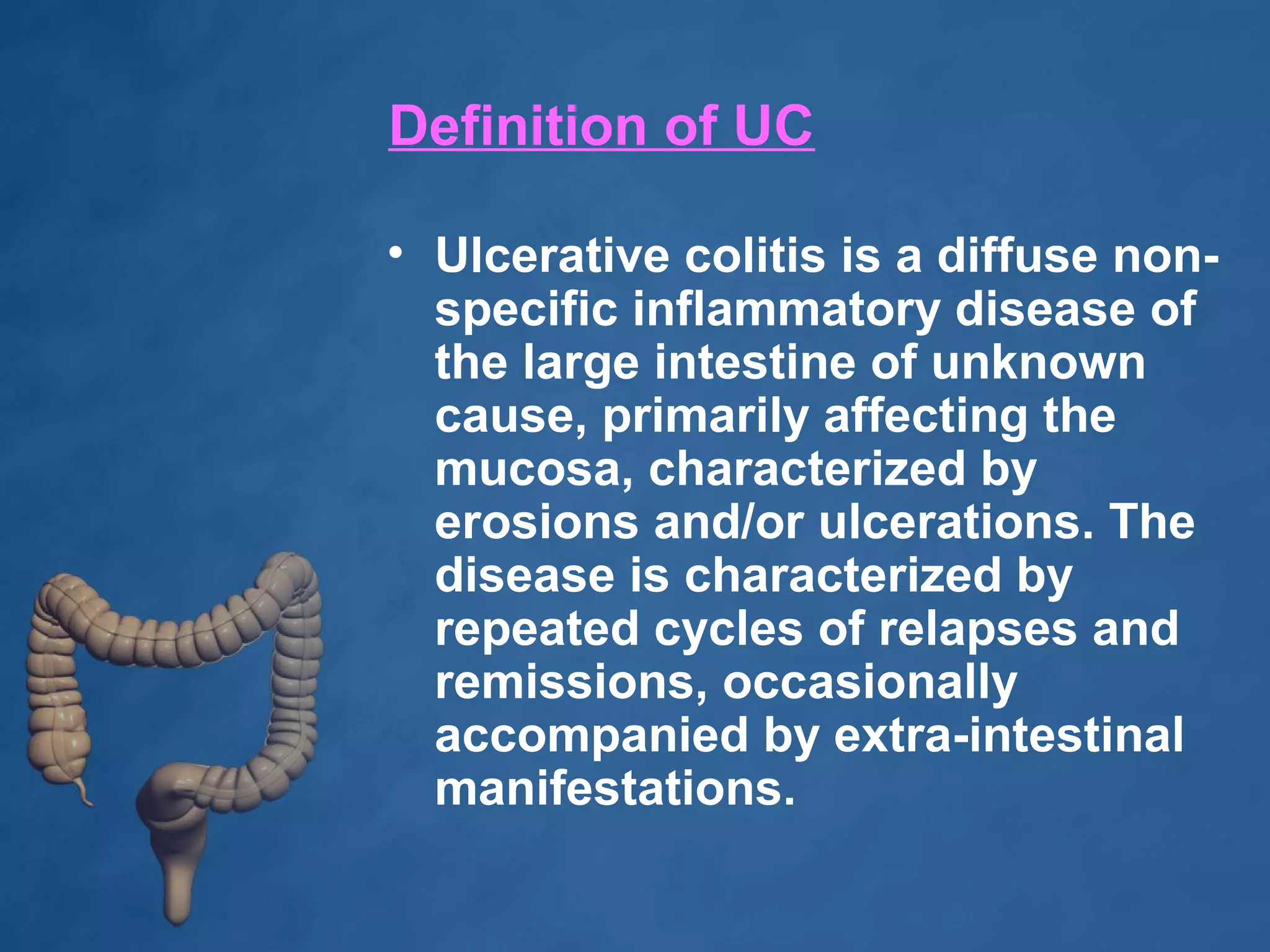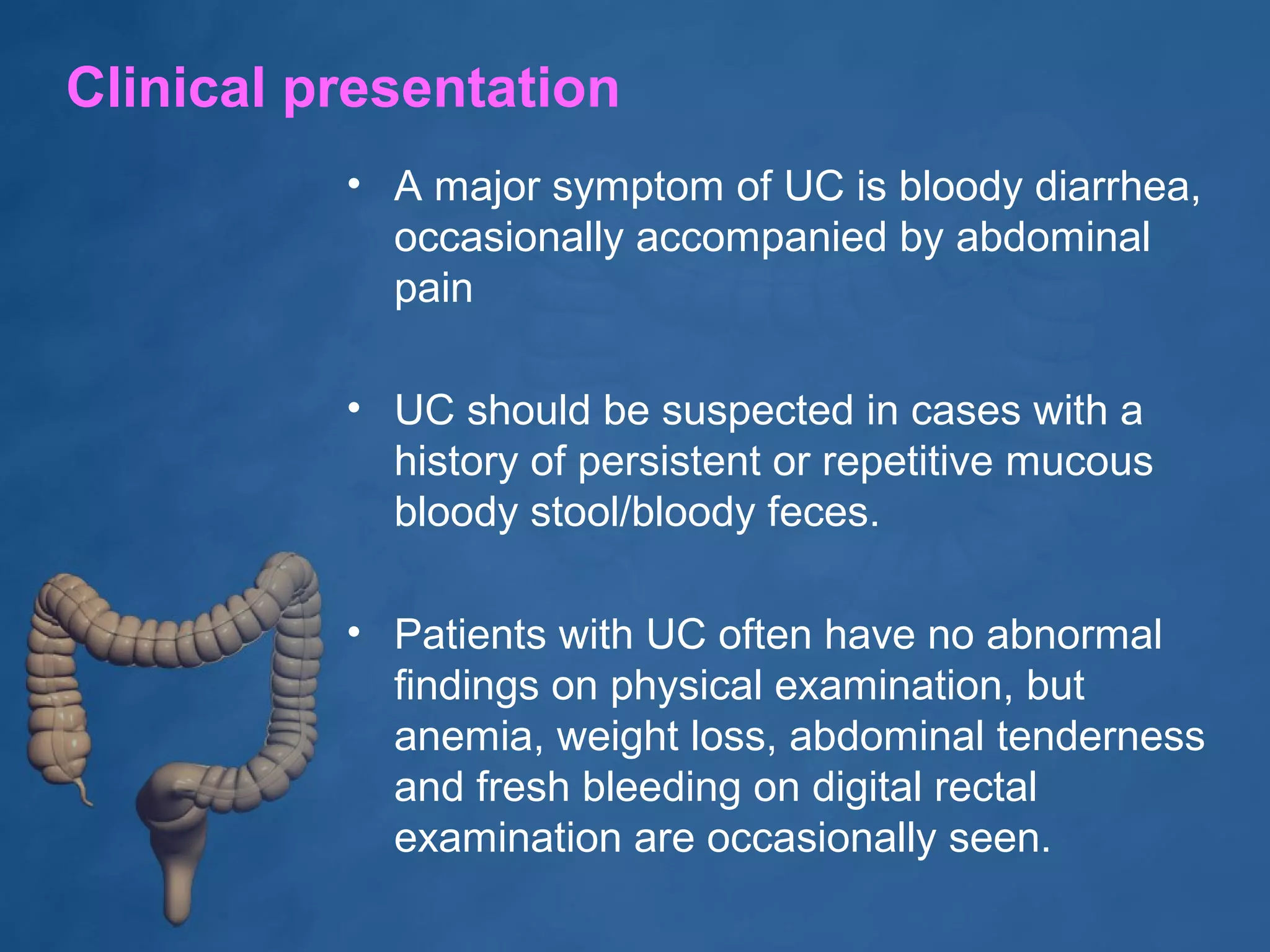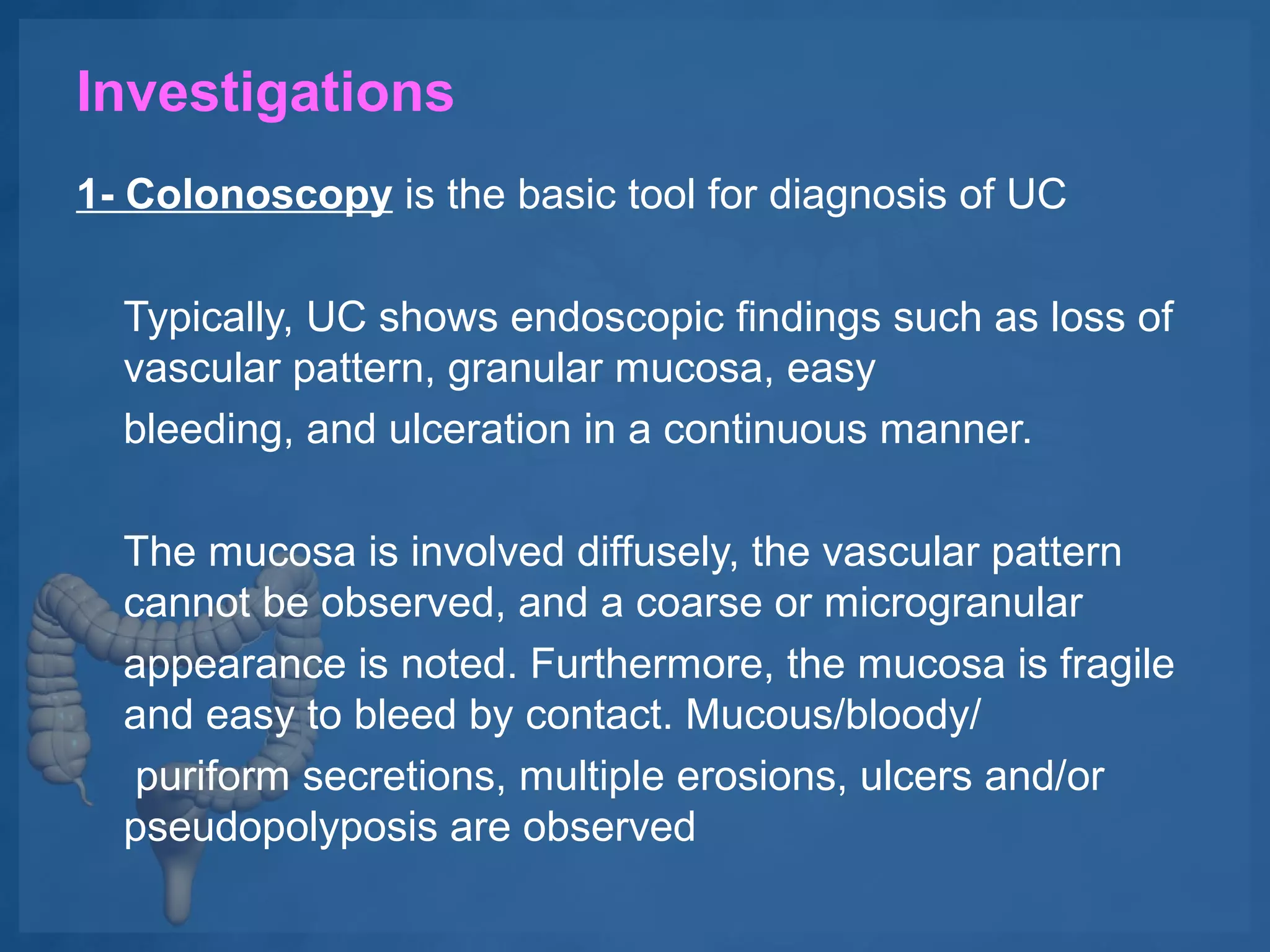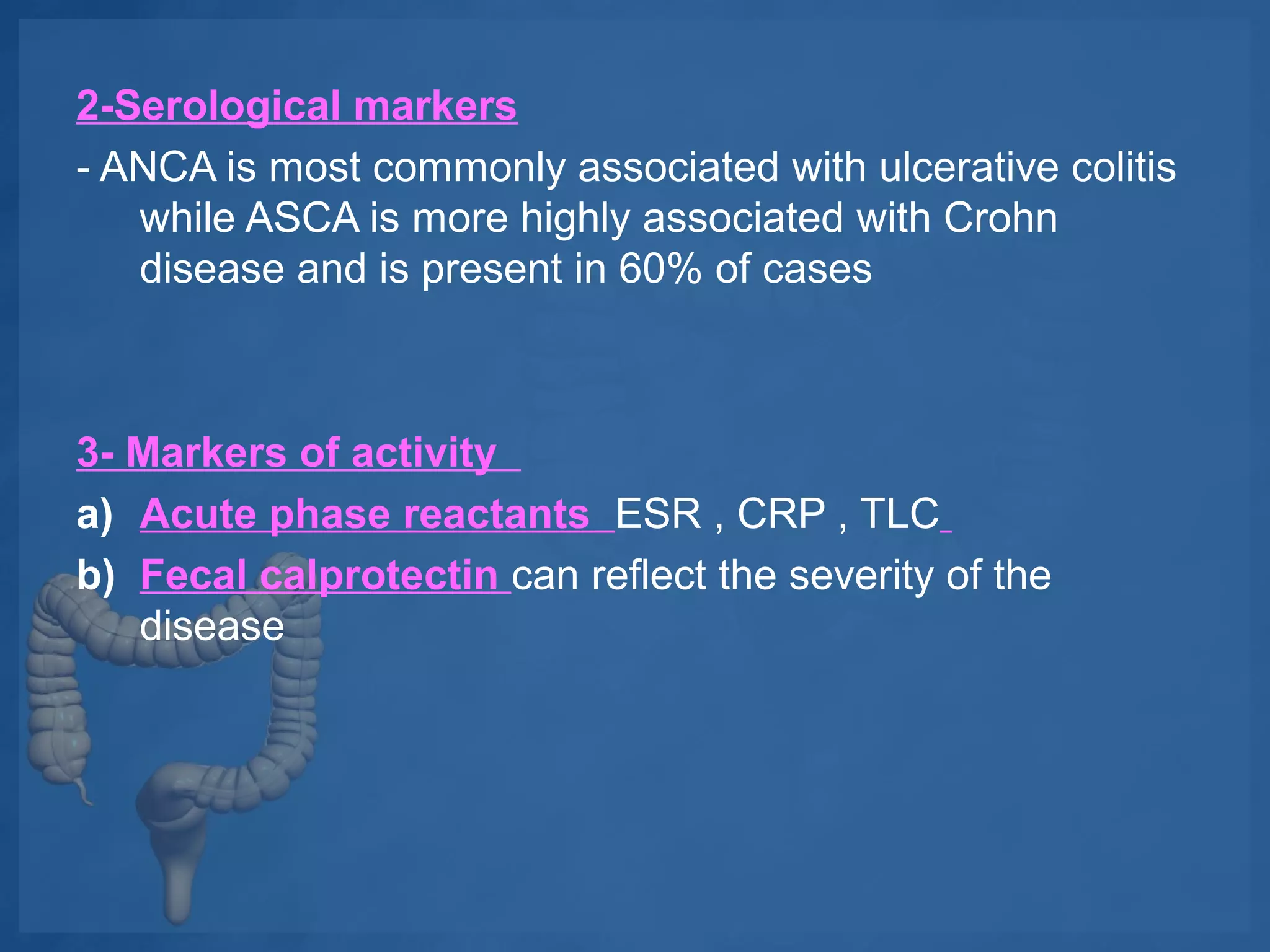Ulcerative colitis is a chronic inflammatory bowel disease that affects the colon. It involves diffuse inflammation and ulceration of the colonic mucosa. The cause is unknown but likely related to genetic and immune factors. Symptoms include bloody diarrhea. Diagnosis involves colonoscopy and biopsy. Treatment involves medications to induce and maintain remission such as mesalamine, corticosteroids, immunomodulators, and biologics. Surgery may be required for severe cases or cancer prevention. Long-term monitoring is needed due to cancer risk.




![Pathophysiology
• A variety of immunologic changes have been
documented in UC. T cells accumulate in the
lamina propria of the diseased colonic
segment. these T cells are cytotoxic to colonic
epithelium. This change is accompanied by an
increase in the population of B cells and
plasma cells, with increased production of
immunoglobulin G (IgG) and immunoglobulin
E (IgE).[9]
• Anticolonic antibodies have been detected in
patients with UC. A small proportion of
patients with ulcerative colitis have smooth
muscle and anticytoskeletal antibodies.](https://image.slidesharecdn.com/ulcerativecolitis-150221154520-conversion-gate02/75/Ulcerative-colitis-5-2048.jpg)


























![LONG TERM MONITORING
• Patients with extensive colitis or left-sided colitis with negative
findings on screening colonoscopy should begin surveillance
colonoscopy in 1-2 years. For patients with ulcerative colitis and
primary sclerosing cholangitis, screening and subsequent
surveillance colonoscopy should begin on an annual basis at the
time of onset of primary sclerosing cholangitis.
• Patients with proctosigmoiditis have no increased risk for colorectal
cancer compared with the general population. However, these
patients should be managed according to the current guidelines on
colorectal cancer screening. If high-grade dysplasia or cancer is
found, colectomy is performed. The management of low-grade
dysplasia is controversial[79] ; however, most experts would
recommend colectomy.](https://image.slidesharecdn.com/ulcerativecolitis-150221154520-conversion-gate02/75/Ulcerative-colitis-32-2048.jpg)

